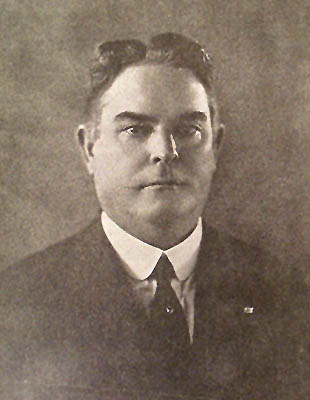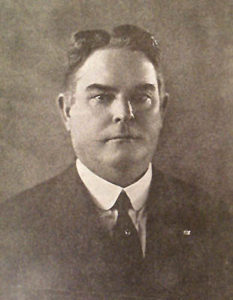Oramel Simpson
Former Louisiana senator Oramel Simpson became the state's governor following the death of Henry Fuqua in 1926.

Courtesy of Wikimedia Commons
Oramel H. Simpson. Unknown
Former Louisiana senator Oramel Simpson became governor of Louisiana following the death of Henry Fuqua in 1926. During his two-year administration, Simpson opposed the political machine of New Orleans mayor Martin Behrman and his followers in the Regular Democratic Organization, commonly referred to as the “Old Regulars,” “The Ring,” or simply “The Machine.” Ultimately, Simpson’s opposition to this group weakened their hold on state politics, thereby opening a path for the election of Huey P. Long as governor in 1928.
Oramel Hinckley Simpson was born in Washington in St. Landry Parish on March 20, 1870, the son of Samuel Simpson and Mary Esther Beer Simpson. After attending Centenary College (then in Jackson), he graduated from Tulane Law School in 1893 and worked as an attorney in New Orleans. In 1899 Simpson married Louise Pichet. That same year, he began working as a warrant clerk at the New Orleans branch of the US Mint.
Simpson had a long career in the Louisiana senate. Between 1900 and 1908, he served as assistant secretary of the Louisiana State Senate before being promoted to secretary, a position he maintained from 1908 to 1924. In 1921 he also served as secretary of the Louisiana constitutional convention. Voters elected him lieutenant governor in 1924, making him next in the line of succession when Gov. Henry Fuqua died on October 11, 1926.
Simpson entered office amidst a controversy over a state contract to build a toll bridge over Lake Pontchartrain, extending from eastern New Orleans to Slidell. He opposed the contract because Gov. Fuqua had awarded it to investors allied with New Orleans mayor Martin Behrman. Hoping to thwart construction of the toll bridge, Simpson supported the construction of a free bridge that would cross the lake from Chef Menteur. Though Simpson’s efforts proved futile, he eventually established a free ferry service, allowing Louisianans to avoid the toll.
The Flood of 1927, which took place during Simpson’s term, presented his greatest challenge. To save the state’s largest city, he ordered workers to dynamite the levees downriver of New Orleans, resulting in the flooding of those areas. Though the state promised to compensate owners of flooded properties, critics maintained that this compensation was inadequate at best. After the flood, Simpson also helped organize a tri-state flood-control commission that coordinated the efforts of Louisiana, Mississippi, and Arkansas.
Though Simpson ran for governor in 1928, Huey P. Long defeated him in the Democratic primary and eventually went on to win the race. The two men remained on good terms, however. After leaving office, Simpson worked as an attorney in New Orleans until his death on November 17, 1932; he is buried in the Greenwood Cemetery.
Adapted from Jerry P. Sanson’s entry for the Dictionary of Louisiana Biography, a publication of the Louisiana Historical Association in cooperation with the Center for Louisiana Studies at the University of Louisiana, Lafayette.
Sources: Robert Sobel and John Raimo, eds., Biographical Directory of the Governors of the United States, 1789-1978, II, Iowa-Missouri (1978); New Orleans Times-Picayune, October 12-November 22, 1926, and November 18-21, 1932; Baton Rouge Morning Advocate, May 16, 1932.
